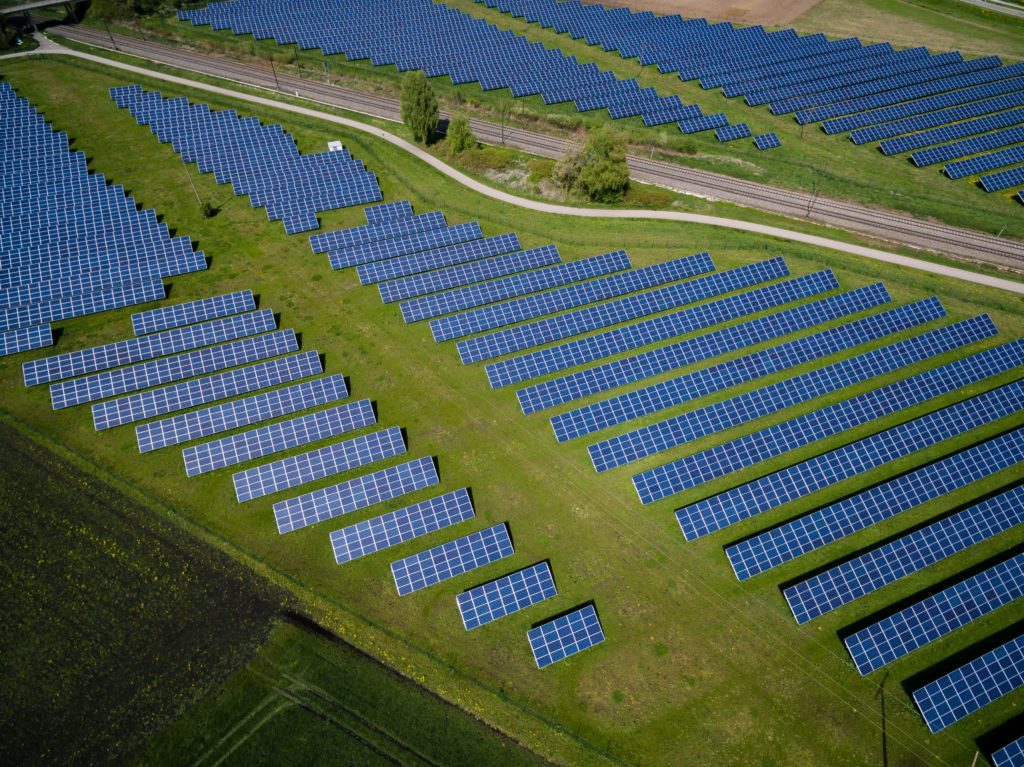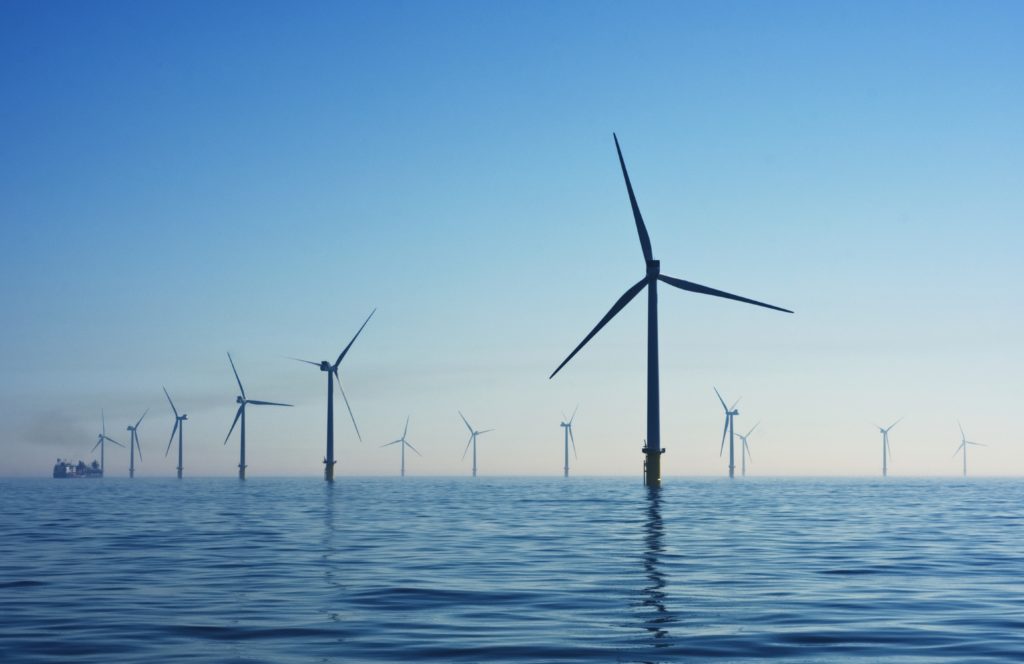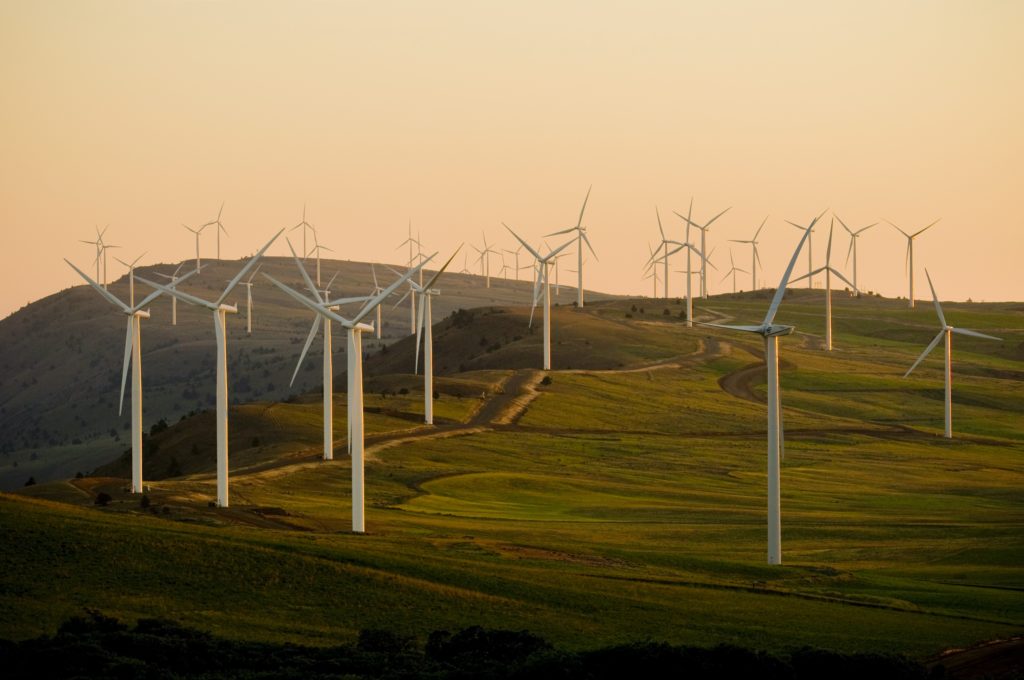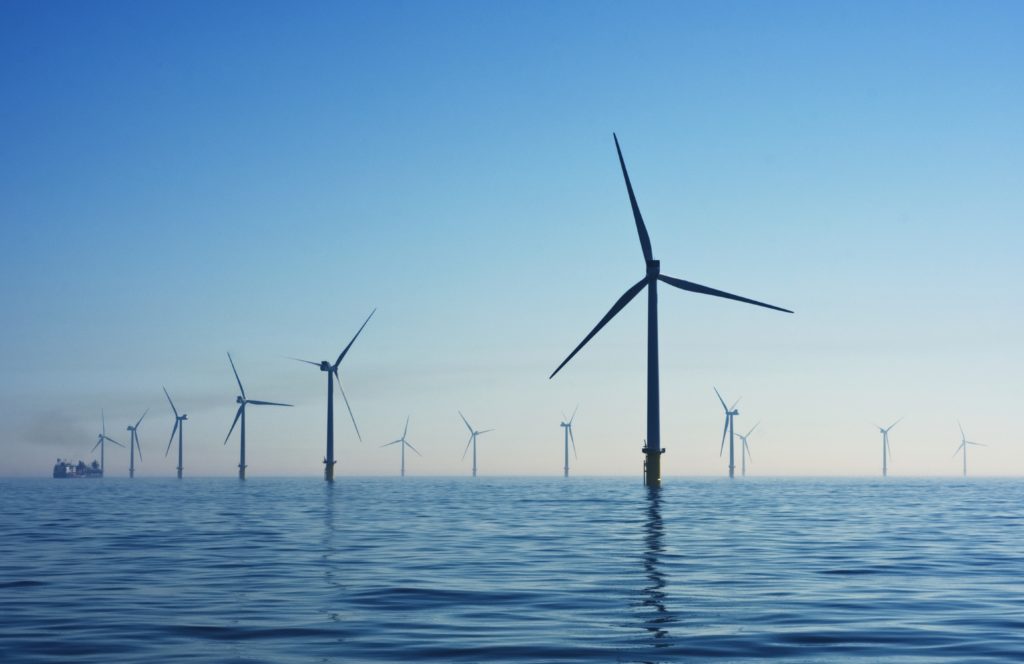Imagine a world where our energy comes from sustainable sources, where the sun powers our homes, the wind fuels our businesses, and the oceans create limitless opportunities. This is the vision behind “Renewable Energy Solutions: Powering a Sustainable Future,” a revolutionary product designed to propel us towards a greener and more sustainable world. With its innovative technology and commitment to renewable energy, 2. is here to revolutionize the way we power our lives, providing us with cleaner, safer, and more environmentally friendly alternatives. Get ready to embrace a brighter future with 2. Renewable Energy Solutions.
1. Solar Power as a Renewable Energy Solution
1.1 How Solar Power Works
Solar power is a renewable energy solution that harnesses the energy from the sun and converts it into electricity. Solar panels, made up of photovoltaic cells, capture sunlight and convert it into direct current (DC) electricity. This electricity is then converted into alternating current (AC) using an inverter, making it usable for homes, businesses, and industries.
1.2 Advantages of Solar Power
Solar power offers numerous advantages as a renewable energy solution. Firstly, it is a clean source of energy that produces no greenhouse gas emissions during operation, contributing to a healthier environment and mitigating climate change. Additionally, solar power is abundant and available virtually everywhere, making it a reliable source of electricity.
Another significant advantage of solar power is its potential for energy independence. By generating electricity on-site, households and businesses can reduce their dependence on traditional energy grids and the associated costs. Moreover, solar energy systems require minimal maintenance and have a long lifespan, providing long-term energy savings.
1.3 Challenges and Limitations of Solar Power
While solar power has numerous benefits, it also faces certain challenges and limitations. One of the main limitations is the intermittent nature of solar energy. Solar panels only generate electricity during daylight hours when the sun is shining. This intermittency can be mitigated through energy storage systems or by connecting to the grid for backup during periods of low sunlight.
The initial cost of installing solar panels can also be a barrier for many individuals and businesses, although the prices have significantly decreased in recent years. Additionally, the efficiency of solar panels is influenced by factors such as shading, temperature, and the angle of the panels, which can affect their overall performance.
2. Wind Energy: Harnessing the Power of the Wind
2.1 Understanding Wind Energy
Wind energy is a renewable energy solution that utilizes the power of wind to generate electricity. Wind turbines, consisting of rotor blades and a rotor hub, capture the kinetic energy of the wind and convert it into mechanical energy. This mechanical energy is then transformed into electricity using a generator within the turbine.
2.2 Benefits of Wind Energy
One of the significant advantages of wind energy is its abundance and accessibility. Wind is available in many regions around the world, making it a widely distributed resource. This makes wind energy a reliable and sustainable source of electricity, contributing to energy security and reducing dependence on fossil fuels.
Furthermore, wind power is a clean source of energy, producing no greenhouse gas emissions or air pollution during operation. By utilizing wind energy, we can mitigate climate change and improve air quality, leading to a healthier environment.
2.3 Drawbacks and Considerations of Wind Energy
While wind energy offers numerous benefits, it also comes with certain drawbacks and considerations. One common concern is the visual impact of wind turbines, especially in areas with scenic landscapes. However, with thoughtful planning and proper placement, this visual impact can be minimized, ensuring the preservation of natural aesthetics.
Another consideration is the potential impact on wildlife, particularly birds and bats. Proper site selection, turbine design, and monitoring can help mitigate these impacts and ensure the coexistence of wind energy and biodiversity.
Furthermore, wind energy, like solar power, is intermittent and depends on wind availability. Energy storage or integration with other renewable energy sources can address this intermittency and ensure a stable supply of electricity.

3. Hydroelectric Power: The Energy of Moving Water
3.1 Introduction to Hydroelectric Power
Hydroelectric power harnesses the energy of moving water to generate electricity. It is one of the oldest and most widely used sources of renewable energy. Hydroelectric power plants typically involve the construction of dams, which create reservoirs or impoundments. The flow of water through turbines in the dam generates mechanical energy, which is converted into electricity using a generator.
3.2 Advantages of Hydroelectric Power
Hydroelectric power offers numerous advantages as a renewable energy solution. Firstly, it is a highly reliable source of electricity since water flow can be controlled through the dam, ensuring steady power generation. Furthermore, hydroelectric power plants have long lifespans and require minimal maintenance, leading to stable energy production over many years.
Another significant advantage is the ability of hydroelectric power plants to provide other benefits beyond electricity generation. These include flood control, irrigation, and water supply for domestic and agricultural purposes. In this way, hydroelectric power contributes to overall water resource management.
3.3 Disadvantages and Environmental Impacts
Despite its advantages, hydroelectric power also has certain disadvantages and environmental impacts. The construction of dams and reservoirs can result in the displacement of communities and the loss of biodiversity due to habitat destruction. However, careful planning and the implementation of mitigation measures can minimize these impacts and ensure sustainable hydroelectric projects.
Additionally, the seasonal availability of water can affect the overall electricity generation capacity of hydroelectric power plants, particularly in areas with dry seasons or droughts. The sedimentation of reservoirs over time can also impact the efficiency and lifespan of the power plants.
4. Biomass Energy: Utilizing Organic Waste
4.1 How Biomass Energy Works
Biomass energy is derived from organic materials such as wood, crops, agricultural residues, and organic waste. These materials can be converted into solid, liquid, or gaseous forms to generate heat, electricity, or transportation fuels. Biomass can be burned directly or used in advanced conversion technologies like gasification and anaerobic digestion.
4.2 Environmental Benefits of Biomass Energy
Biomass energy offers several environmental benefits. Firstly, it provides an alternative to fossil fuels, reducing greenhouse gas emissions and mitigating climate change. Moreover, biomass energy can contribute to waste management by utilizing organic waste materials that would otherwise end up in landfills, releasing harmful greenhouse gases into the atmosphere.
Biomass also has the potential to support sustainable land management practices. Growing energy crops or using crop residues for biomass energy can provide additional income opportunities for farmers and help promote regenerative agriculture.
4.3 Challenges and Limitations of Biomass Energy
Despite its environmental benefits, biomass energy also faces certain challenges and limitations. One limitation is the availability and sourcing of biomass feedstocks. The demand for biomass should be balanced with sustainable harvesting practices, ensuring the preservation of ecosystems and biodiversity.
Moreover, the combustion of biomass can result in air pollutants, although modern biomass power plants employ advanced emissions control technologies to mitigate these impacts. Additionally, the transportation and storage of biomass can present logistical challenges, particularly in remote areas.

5. Geothermal Energy: Tapping into the Earth’s Heat
5.1 Overview of Geothermal Energy
Geothermal energy utilizes the heat from within the Earth to generate electricity or provide direct heating and cooling. It relies on naturally occurring geothermal reservoirs, where hot water or steam is accessed through wells and used to power turbines or for direct use in heating systems.
5.2 Advantages of Geothermal Energy
Geothermal energy offers several advantages as a renewable energy solution. One of the main advantages is its consistent availability. Unlike solar and wind energy, geothermal resources are not affected by weather conditions, making geothermal power plants capable of providing baseload electricity, ensuring a stable and reliable energy supply.
Moreover, geothermal energy is a clean source of electricity, emitting minimal greenhouse gases and pollutants during operation. This contributes to improved air quality and reduced environmental impacts compared to conventional fossil fuel-based power plants.
5.3 Drawbacks and Geological Considerations
Despite its advantages, geothermal energy also has certain drawbacks and geological considerations. Not all regions have suitable geothermal resources, as they are mostly concentrated in areas with specific geological characteristics, such as tectonic plate boundaries and volcanic activity.
Furthermore, the development of geothermal power plants requires drilling deep into the Earth’s crust, which can be a costly and technically challenging process. Proper geological exploration and assessment are necessary to ensure the availability and viability of geothermal resources.
6. Tidal and Wave Energy: The Power of the Ocean
6.1 Harnessing Tidal Energy
Tidal energy is generated by harnessing the energy from the natural rise and fall of ocean tides. Tidal power plants typically consist of underwater turbines installed in areas with strong tidal currents. As the tides flow, they drive the turbines, generating electricity.
6.2 Wave Energy and Its Potential
Wave energy, similar to tidal energy, utilizes the power of the ocean but focuses on capturing the energy carried by waves. Wave energy devices, such as floating platforms or submerged structures, convert the mechanical motion of the waves into electricity through various technologies, including oscillating water columns and point absorbers.
Both tidal and wave energy have immense potential as renewable energy sources due to the predictable nature of ocean currents and waves. They offer a consistent and reliable source of electricity that can further contribute to the diversification of the renewable energy mix.
6.3 Challenges and Technological Development
Tidal and wave energy technologies are still in the early stages of development and face several challenges. The harsh ocean environment can be detrimental to the devices, requiring robust and durable designs. Additionally, the installation and maintenance of these technologies in the ocean can present logistical and operational challenges.
Technological advancements, ongoing research, and pilot projects are necessary to harness the full potential of tidal and wave energy. Collaboration between industries, governments, and research institutions is crucial to accelerate innovation and overcome the existing challenges.

7. Hydropower: Clean Energy from Water
7.1 Introduction to Hydropower
Hydropower utilizes the kinetic energy of flowing or falling water to generate electricity. It is a mature and widely deployed renewable energy solution, with hydroelectric power plants being the largest source of renewable electricity globally.
7.2 Benefits of Hydropower
Hydropower offers numerous benefits as a renewable energy source. Firstly, it provides reliable and consistent electricity generation, contributing to energy security and grid stability. Additionally, hydropower plants have long lifespans and require minimal fuel inputs, resulting in low operating costs and stable electricity prices.
Hydropower also offers flexibility in meeting different energy demands. It can provide peaking power during periods of high electricity demand or function as a baseload power source, depending on the design and operation of the power plant.
7.3 Environmental and Social Impacts
While hydropower has significant advantages, it also has environmental and social impacts that need to be carefully considered. The construction of large dams can result in habitat loss, alteration of river ecosystems, and displacement of communities. Proper environmental impact assessment, stakeholder engagement, and mitigation measures are necessary to ensure sustainable hydropower projects.
Furthermore, the operation of hydropower plants can affect downstream water flows, affecting downstream ecosystems and livelihoods. Proper water management strategies, including environmental flow requirements, can help minimize these impacts and maintain the ecological balance of rivers.
8. Biofuels: Sustainable Alternatives to Fossil Fuels
8.1 Understanding Biofuels
Biofuels are fuels derived from organic matter, such as plants, algae, and organic waste. They can be used as a substitute for fossil fuels in transportation, industrial processes, and heating. Biofuels can be classified into three main categories: bioethanol, biodiesel, and biogas.
8.2 Advantages of Biofuels
Biofuels offer several advantages as sustainable alternatives to fossil fuels. Firstly, they significantly reduce greenhouse gas emissions compared to conventional fossil fuels. Biofuels also have the potential to contribute to energy security by diversifying the energy mix and reducing dependence on imported fossil fuels.
Moreover, biofuels can promote rural development and create new economic opportunities. The cultivation of energy crops and the production of biofuels can provide additional income to farmers and stimulate local economies.
8.3 Sustainability Considerations
There are certain sustainability considerations associated with the production and use of biofuels. One key concern is the potential competition between biofuel feedstock production and food production. Appropriate land-use planning, sustainable agricultural practices, and the use of non-food feedstocks can help mitigate these concerns.
Additionally, the production of biofuels requires significant amounts of water and energy, especially during the conversion processes. Efficient production technologies, water management strategies, and the use of renewable energy sources are necessary to ensure the sustainability of biofuels.
9. Waste-to-Energy: Converting Trash into Power
9.1 How Waste-to-Energy Works
Waste-to-energy is a process that converts organic waste materials into usable forms of energy, including electricity, heat, or biofuels. It involves various technologies, such as incineration, anaerobic digestion, and gasification, depending on the type of waste and desired energy output.
9.2 Benefits of Waste-to-Energy
Waste-to-energy offers several benefits in terms of waste management and energy production. Firstly, it diverts organic waste from landfills, reducing methane emissions, a potent greenhouse gas. This contributes to mitigating climate change and improving air quality in surrounding areas.
Furthermore, waste-to-energy facilities can generate electricity or heat, providing a source of renewable energy. This energy can be utilized to power homes, businesses, or even integrated into district heating systems, reducing the reliance on fossil fuels.
9.3 Challenges and Environmental Concerns
Despite its benefits, waste-to-energy also faces certain challenges and environmental concerns. One concern is the emissions generated during the conversion processes. Incineration, for example, can release air pollutants if not properly controlled. Advanced emissions control technologies and strict regulatory standards are necessary to minimize these emissions.
Additionally, the sourcing and collection of waste materials can pose logistical challenges, particularly in regions with inadequate waste management infrastructure. Proper waste separation, recycling, and waste reduction efforts are crucial in ensuring the viability and sustainability of waste-to-energy projects.
10. Renewable Energy Storage: Overcoming Intermittency
10.1 Importance of Energy Storage
Renewable energy sources, such as solar and wind, are inherently intermittent, depending on weather conditions and natural resources. Energy storage plays a vital role in overcoming this intermittency by capturing and storing excess energy during periods of high production and releasing it during periods of high demand or low renewable energy generation.
10.2 Different Storage Technologies
There are various technologies used for renewable energy storage. These include batteries, pumped hydro storage, compressed air energy storage, and thermal energy storage. Each technology has its advantages and limitations, depending on factors such as scale, cost, efficiency, and application.
Batteries, such as lithium-ion batteries, are the most commonly used technology for small-scale energy storage applications, such as in residential or commercial settings. Pumped hydro storage, on the other hand, is a mature technology suitable for large-scale energy storage, utilizing the gravitational potential energy of water stored in elevated reservoirs.
10.3 Advancements and Future Trends
Advancements in energy storage technologies continue to improve their efficiency, reliability, and cost-effectiveness. Research and development efforts are focused on developing new materials, exploring emerging technologies, and optimizing storage systems.
The integration of renewable energy storage systems with smart grids and advanced energy management systems is a key focus for future developments. This integration facilitates better coordination between energy generation, storage, and consumption, maximizing the utilization of renewable energy sources.
In conclusion, renewable energy solutions offer diverse and sustainable ways to meet our energy needs while mitigating environmental impacts and reducing greenhouse gas emissions. Each renewable energy source has its unique advantages, challenges, and considerations. By harnessing the power of the sun, wind, water, biomass, geothermal, ocean, and waste, we can build a cleaner and more sustainable future for generations to come.



